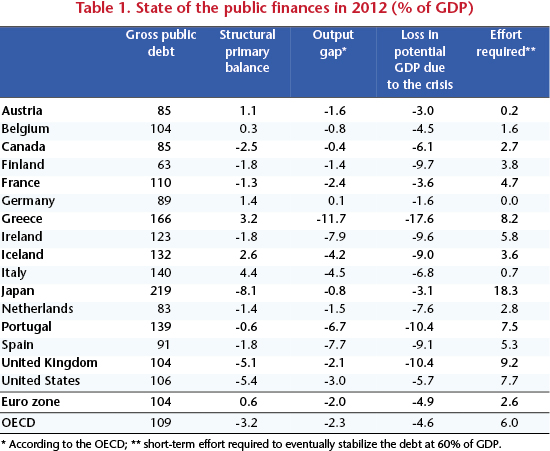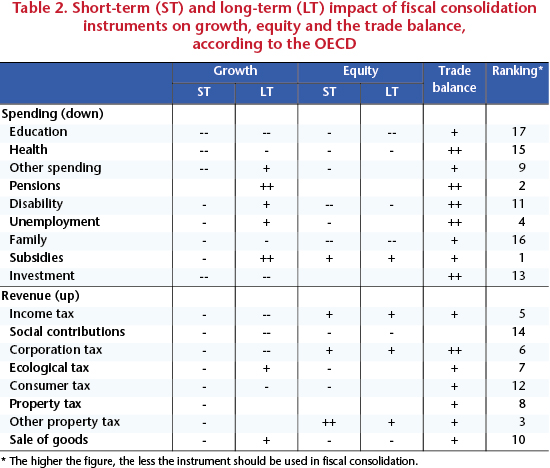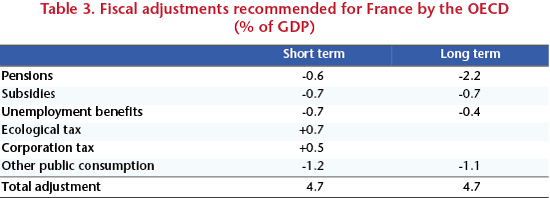What is a Left economics? (Or, why economists disagree)
What is a Left economics? In an opinion column published in the newspaper Libération on 9 June 2015 (“la concurrence peut servir la gauche” [“Competition can serve the Left”], Jean Tirole and Etienne Wasmer reply that to be progressive means “sharing a set of values and distributional objectives”. But, as Brigitte Dormont, Marc Fleurbaey and Alain Trannoy meaningfully remark (“Non, le marché n’est pas l’ennemi de la gauche” [“No, the market is not the enemy of the Left”]) in Libération on 11 June 2015, reducing progressive politics to the redistribution of income leaves something out. A Left economic policy must also be concerned about social cohesion, participation in social life, the equalization of power, and we could also add the goals of defence of the environment and, more generally, leaving a fair legacy to future generations. Paradoxically, if the Left must not a priori reject market solutions (including the establishment of a carbon market), the de-commodification of human relations is also part of core left-wing values. The authors of these two columns insist that it is the ends that count, not the means: the market and competition can serve progressive objectives. This is not a new idea. The merchants of the 18th century had already understood that holding a private monopoly could allow them to amass great fortunes. Tirole and Wasmer draw on more recent debates, including on the issues of taxis, housing, the minimum wage, the regulation of the labour market, and university tuition fees. Their conclusion, a bit self-serving, is, first, that more independent evaluations are needed, and second, that our elected representatives and senior officials need to be trained in economics.
Does the Left define itself by values? To accept this proposal, we would need to be able to distinguish clearly between facts and values. Economics would be concerned with facts broadly speaking and would delegate the issue of values to politics. Disagreements about facts would be exaggerated. Political differences between the Left and the Right would be only a matter of where to put the cursor on values or preferences, which would be independent of the facts. According to this viewpoint, the instruments need to be designed by trained technicians, while the politicians just select the parameters. The Left and the Right would then be defined by parameters, with progressives more concerned about reducing inequality and conservatives more concerned about the size of the pie. In this scheme, disagreements among economists would be focused on values. Paradoxically, the examples used by Tirole and Wasmer are the subject of important controversies that involve more than just values: economists are very divided over the liberalization of the taxi business, the level of the minimum wage, and the possible introduction of university enrolment fees. There are important disagreements, even among progressive economists.
Why the disagreement? There are fewer and fewer disputes over the facts, strictly speaking. The system of statistics has made considerable progress. However, pockets of resistance remain. For example, on taxis, it is difficult to know who holds the licenses and the prices at which they were acquired, even though these are very important issues. If the vast majority of licenses are held by people who received them for free, then increasing the supply via private cars with drivers (“VTC”) poses no real problem of fairness. On the other hand, if most licenses were acquired on the secondary market at exorbitant prices (up to 240,000 euros in Paris), then the question of compensation arises. Buying 17,000 licenses at 200,000 euros apiece would cost the State 3.5 billion euros just for the licenses in Paris. This problem cannot be dismissed with a simple, “of course these are often expensive” (see “Taxis vs chauffeur-driven private cars: victory of the anti-innovation lobby?”).
While the facts are in little dispute, the disagreement often comes down to what matters. Should we put the emphasis on a lack of equal outcomes or a lack of equal opportunity? Should we count real estate gains when examining inequalities in capital? Should we be concerned about relative poverty or absolute poverty? Should we worry about inequality between households or between individuals? All this reflects that disagreements are not just a matter of where you put the cursor, but the prioritization of goals that are sometimes complementary and sometimes contradictory. The very way the system of statistics is constructed is not to produce pure facts but instead results from a logic that dictates that what you measure is the representation of a norm. But this norm is in fact reductive (it excludes others), so much so that the measure has meaning only from when we agree on the norm’s value: the measure is never neutral vis-à-vis values.
This vision of an economic science that can distinguish facts from values is too reductive – it is often difficult to distinguish between the two. For example, depending on whether we measure the impact of tax policy on individuals or on households, the policy may be characterised as redistributive or as anti-redistributive. Often there is no easy solution to this problem, because it is difficult for the statistician to know how incomes are actually being shared within households. The current solution for measuring living standards and poverty is to assume that resources are fully shared within the household, regardless of the source of the income (labour income from one or another member, social welfare, taxation, etc.). Yet numerous studies show that for many households this assumption is false: empirical studies show that spending depends on who provides the resources, with women spending a larger portion of their income on the children.
Does the free character of the higher education system make it anti-redistributive? To public opinion this is obvious: the students come from wealthier families and will receive bigger salaries than those who don’t study, while everyone pays taxes, including VAT and the CSG wealth tax. This seems to be true if we think about it at time t. On the other hand, if you consider the life cycle the issue becomes more complicated: many students do not get high-paying jobs. School teachers, artists and journalists are often highly educated but make lower-than-average wages. For them, paying income tax is more advantageous than paying enrolment fees. Conversely, many people who have little education receive large salaries. Over the life cycle, having higher education paid for through income tax is redistributive (see “Dépenses publiques d’éducation et inégalités. Une perspective de cycle de vie” [“Public expenditure on education and inequality. A life cycle perspective”).
Should we measure income at the household level or individual level? Over the life cycle or at a given point in time? These examples show that what is measured by economists usually depends on a norm. This does not however mean that the measure is completely arbitrary and ideological. In fact, social science measurement is neither entirely normative nor merely descriptive: facts and norms are intertwined.
Economists do not reason simply with raw facts. They develop and estimate behavioural models. They do this to answer the question, “What if …?” What if we increased the minimum wage, what would be the impact on employment and wages at the bottom of the scale? You could classify the answer to such questions as facts. But unlike facts in the strict sense, they are not directly observable. They are generally estimated in models. However, the disagreements over these “facts” (the parameters estimated in the models) are very important. Worse, economists tend to greatly underestimate the lack of a consensus.
The parameters estimated by economists have meaning only within a given model. However, the disagreements between economists are not just about the parameters estimated, but the models themselves, that is to say, about the selection of simplifying assumptions. Just as a map is a simplification of the territory it represents, economic models are a simplification of the behavioural rules that individuals follow. Choosing what to simplify is not without normative implications. The best map depends on the degree of accuracy but also on the type of trip you want to make: once again, facts and values are intertwined. Differences between policies are not simply parametric, but arise from different representations of society.
Thus, contrary to the conclusion of Tirole and Wasmer, economic evaluations cannot be simply left to objective experts. In this respect, economists resemble other social scientists more than they do physicians: in fact, agreement on what constitutes good health is easier than on what constitutes a good society. Economic evaluations must therefore be pluralist, in order to reflect as much as possible the diversity of views in a society. What separates us from implementing the reforms needed is not a pedagogical deficit on the part of the experts and politicians. Nor is it simply a problem of educating the elite. There is obviously no agreement among the experts on the reforms needed. However, the economic reforms are often too technical to submit to a referendum and too normative to be left to the “experts”. To resolve this problem, consensus conferences and citizens’ juries seem relevant when the subject is normative enough to care about the representativeness of the participants and technical enough that we need to seek informed opinions. In economics, these kinds of conferences could deal with the issue of the individualisation of income taxes or carbon offset taxes. In short, economists are more useful when they make the trade-offs explicit than when they seek the facade of a consensus.


